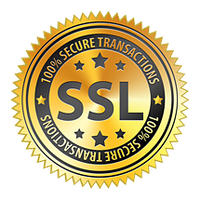You’ve got off the easy trails (easy is marked by Green in America and Blue in Europe) and are exploring the mountain as a L2 Rider. You’ll be riding more of the mountain getting into intermediate terrain (Blue trails in America and Red trails in Europe). Riding steeper terrain can be super stoke especially when you’re using efficient movements and alignments. This online snowboard lesson will go over Funnel Turns Drill. You’ll have access to all our snowboard tutorials when you signup that cover every step and feedback from your coach. We also have some free snowboard videos to prepare for ‘Snowboarding Backcountry’ on our YouTube Page. I recommend watching and mastering these L1 RAW snowboard videos before riding Steeper Terrain; Beginner Snowboard Lesson on Steering, Toeside Heelside Stance, How to Snowboard: Balance Twist & Beginner Snowboard Stance. Learn to snowboard online with flowingfreeride.com, Take Placement Quiz, take a look at Our Blog for more free content, and learn to snowboard right!
Think of the shape of a funnel making large turns, then medium and last small/fast turns. You’ll have access to all our snowboard tutorials when you signup that cover every step. We also have some free snowboard videos to prepare for steeper terrain on our YouTube Page. I recommend watching and mastering these L1 RAW snowboard videos before riding Steeper Terrain; Beginner Snowboard Lesson on Steering, Toeside Heelside Stance, How to Snowboard: Balance Twist & Beginner Snowboard Stance . Learn to snowboard online with flowingfreeride.com and take a look at Our Blog for more free content and learn to snowboard right.
The focus on this drill is to be able to turn and different speeds and multiple size radius of our turns. Let’s face it snowboarding is about turning. I love to just point it and not turn when conditions and safety allow. Before we get into pure speed and adrenaline we need to be able to turn as quickly as possible. There are dangers and obstacles all over the mountain. Once we get off the easy trails the slopes become more steep and narrow. For your safety and those on the mountain you’ll want to practice changing the size of your turns. The Funnel Drill is perfect to help you practice the size of your turns. It will help you develop ‘Rhythm & Flow’ key to everything we do.
Start making 4-5 turns that are very large, then make 4-5 turns that are medium in radius shape. Make 4-5 turns that are small and quick and then see how quick and fast you can make your turns. You’ll want to be using a lot of lower body movements and really focus initiating your turns with your ankle. There you’ve done it Funnel Turns. Drills really help you explore you snowboarding body movement and develop muscle memory. Get out there and Ride Right!
You can signup to get access to all of our snowboard lessons, study guides, text books, glossary, tests and direct feedback from your coach. Learn to snowboard online with flowingfreeride.com and take a look at our YouTube Page for more free content and learn to snowboard right.


